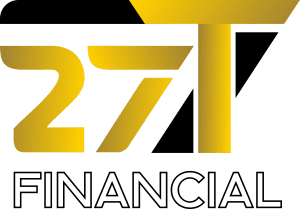Cash Balance Plans: The Secret Weapon for High-Income Earners!
In the world of retirement planning, the spotlight is often on 401(k)s and IRAs—but let’s think outside the box for a moment. Imagine a financial strategy that doesn’t just move the ball down the field but drives it straight into the end zone for high-income earners. Enter Cash Balance Plans, the often-overlooked powerhouse that’s perfect for business owners like you who want to maximize retirement savings while scoring some serious tax advantages.
Let’s break down how cash balance plans work, their benefits, and how they might be the winning play for your retirement strategy.
The Game Changer: What Is a Cash Balance Plan?
Think of a cash balance plan as the hybrid athlete of the retirement world. It combines the features of a traditional defined benefit plan (like a pension) and the more familiar defined contribution plan (such as a 401(k)). Each participant has an individual account, but unlike a 401(k), the employer sets a guaranteed return target—say 3-5%—for their retirement investments. Just like in sports, where steady progress wins games, this predictable growth makes planning for the future easier.
How Cash Balance Plans Work: Breaking Down the Plays
Here’s the playbook for cash balance plans:
- Employer Contributions: As the business owner, you’ll make contributions to each participant’s account based on salary or a flat dollar amount. These contributions are the backbone of the plan—like having a solid offensive line protecting the quarterback.
- Interest Credits: Each account earns a fixed, predetermined interest rate. Whether markets soar or stumble, participants get predictable growth. It’s like a safe, reliable run play that always gets you a few yards forward.
- Vesting: Employees typically “vest” over time, gaining full ownership of their accounts much like a rookie becoming a seasoned player on your team.
- Distribution Options: Upon retirement, participants can take their balance as a lump sum or roll it into an IRA—just like choosing between a powerful pass or a run down the middle. For savvy investors, this means Roth conversions can be part of the strategy, creating opportunities for significant tax savings in retirement.
Contribution Limits: Making Big Plays
Here’s where cash balance plans really shine. Unlike the capped contribution limits of a 401(k), cash balance plans offer higher limits, especially for older participants. It’s like moving from regular season games to the Super Bowl:
- Under 40: Up to $100,000
- Ages 40-49: Up to $150,000
- Ages 50-54: Up to $200,000
- Ages 55-59: Up to $250,000
- Ages 60 and above: Up to $300,000
These high limits allow business owners and high-income earners to make massive contributions toward their retirement, far exceeding the potential of a 401(k) alone. Imagine piling on points late in the game—these contributions can accelerate your path to a secure retirement.
Key Considerations: Avoiding Turnovers
Just like any strategy, there are things to keep in mind before committing to a cash balance plan:
- Consistent Cash Flow: Cash balance plans require steady contributions, making them ideal for businesses with consistent profits. Running a high-stakes play requires confidence that you’ll have the resources to follow through each year.
- Administrative Complexity: These plans can be more complex than a simple 401(k) and may involve actuarial calculations, valuations, and regulatory compliance. Like assembling a great coaching staff, it’s essential to work with experienced professionals to manage the plan.
- Employee Participation: Cash balance plans must benefit both highly compensated employees and rank-and-file workers. Passing nondiscrimination tests is crucial to keep the plan compliant.
- Cost: Higher administrative and actuarial costs are part of the equation, so you’ll need to ensure your business can absorb these.
The Benefits: Why Cash Balance Plans Are the MVP
- High Contribution Limits: Older participants can contribute significantly, turbocharging their retirement savings—think of it as piling on points as the clock winds down.
- Tax Advantages: Employer contributions are tax-deductible, reducing your taxable income. Plus, tax-deferred growth means you’re playing the long game, potentially allowing for Roth conversions in early retirement to lower your lifetime tax burden.
- Predictable Growth: With guaranteed interest credits, participants can count on steady, reliable gains—much like a successful drive down the field using short, consistent plays.
- Flexibility in Retirement: Cash balance plans offer a range of distribution options, including lump sums or annuities, giving you the freedom to choose the play that best suits your retirement goals.
The Final Score: Is a Cash Balance Plan Right for You?
If your business has consistent cash flow and you’re looking to maximize both savings and tax benefits, cash balance plans can be a game-winning strategy. Whether you’re a solo business owner or you have key executives in mind, pairing a cash balance plan with a 401(k) can create a powerful retirement package.
Remember, just like a successful team, planning and execution are key. Working with a 401(k) and cash balance plan specialist can help ensure you’re playing by the rules and maximizing your potential.
Ready to explore whether a cash balance plan could be the right play for your business?
If you’re interested in a conversation, you can email me or pick a time on my calendar for a conversation.







